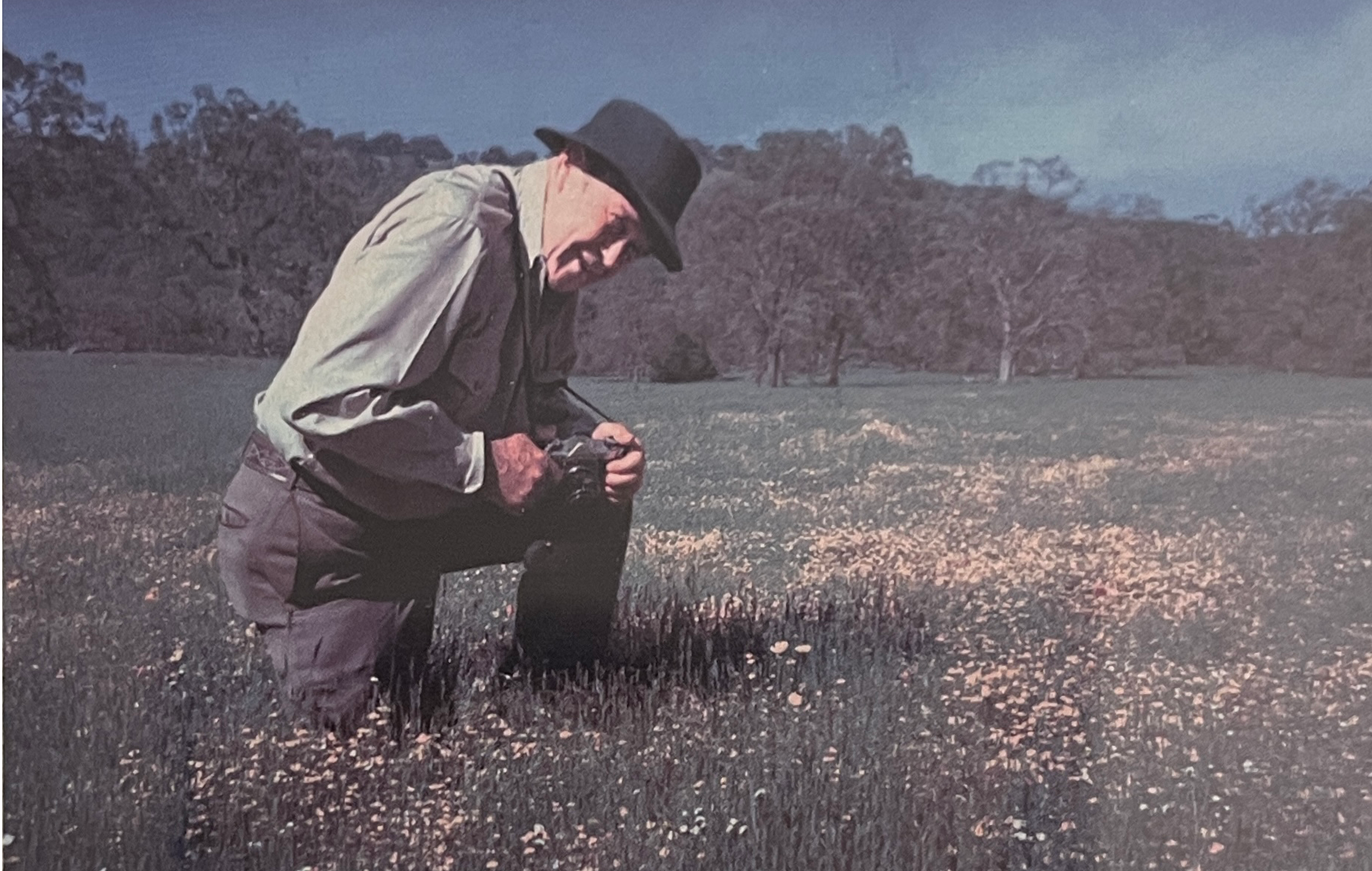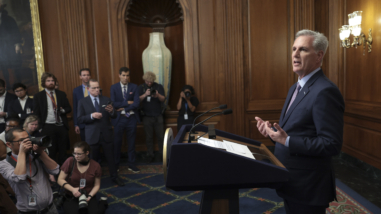The Hewlett Foundation as a formative institution

We are used to thinking of foundations as instrumentalities or conduits endowed by donors (living or deceased) to change the world, hopefully for the better, via their grantmaking. As I prepare to wrap up my eight-year term as director of the foundation’s grantmaking in support of U.S. democracy, I am struck by how much the institution has shaped me and my work for the better.
Like all robust institutions, high-performing foundations leave an imprint on the individuals who work in them. In his stellar book, A Time To Build, Yuval Levin of the American Enterprise Institute, one of the U.S. Democracy program’s anchor grantees, has this to say of the formative role of institutions:
“They structure our perceptions and our interactions, and as a result they structure us. They form our habits, our expectations, and ultimately our character. By giving shape to our experience of life in society, institutions give shape to our place in the world and to our understanding of its contours. They are at once constraining and enabling….[moving] us to ask how we ought to think and behave with reference to a world beyond ourselves: ‘Given my role here, how should I act?’”
I was a hard test case for the formative powers of the Hewlett Foundation. I arrived in my 49th year with graduate degrees, publications, fellowships, and years of practical experience in the field where I would develop our strategy and lead our grantmaking. I had also advised and consulted with many other foundations as they went about similar work. With my extensive experience, know-how, and established viewpoints, I was presumably already set in my ways concerning how best to do my job. (And, as my family, friends, and colleagues can all attest, I can at times be a little bit stubborn!) Yet now, in my 58th year, as I prepare to leave, I can readily see that I will do so as a different professional and practitioner. Allow me to trace how the Hewlett Foundation shaped me during my term.
Embodying Hewlett’s principles
We might start with the institution’s guiding principles, which had long been implicit, and then the foundation helpfully made them explicit during my tenure. The preamble for these principles anchors them in Bill and Flora Hewlett’s far-sighted intent (and underscores their own belief in the power of institutions): “Philanthropy is a distinctive enterprise, with unique challenges and opportunities. The Hewletts approached it with a humanistic philosophy based on faith in the capacity of people to do good and belief in the importance of healthy institutions as a means for doing so.”
I won’t recount all of the guiding principles here. I’ll just note that any subset of them linked together could stand without alteration as a fair description of how we have endeavored to strengthen U.S. democracy. For example, “We pursue change by tackling defined problems in a pragmatic, nonpartisan manner. We are committed to openness, transparency, and learning. We are committed to working, both internally and externally, in a collaborative fashion based on mutual respect. Grantees, co-funders, and other colleagues in our work are our partners in problem-solving.”
Of course, principles don’t translate themselves into action. They must be embodied in and conveyed through norms, practices, ways of working, culture, and constraints. Consider perhaps the most obvious constraint imposed on the foundation’s grantmakers: our eight-year terms. As I have shared elsewhere, my fixed-term imbued me with a sense of stewardship, of being entrusted, for a limited time, with responsibility for a valuable set of resources. It heightened the sense of urgency and care I felt obliged to use in directing someone else’s money to its highest and best charitable purpose. My term limit has also meant I can readily put myself in grantees’ shoes, recalling what it was like, and anticipating what it might be like again, to be on the other side of the table asking for support. Finally, term limits provide a recurring means for the foundation to realize its commitment to the manifold dimensions of diversity, equity, and inclusion.
Lean but impactful
Consider another constraint intentionally embedded in our institution’s operations: our lean staffing model. We know that relative to our annual payout, our staff size and administrative expenses are a fraction of most of our peers. It is hard to expand your team size at the Hewlett Foundation. I should know, I have asked to do this on a few occasions and got no for an answer nearly every time! But I also understand the reasons why. It is not primarily about efficiency (though of course the less we spend internally, the more we can grant externally).
One important reason we are committed to a lean staff is that it pushes us to make larger, longer, less restricted grants, which we believe as an institution are usually the most helpful kind. Grantee feedback and industry studies bear out our conviction. With a finite and small team, it is challenging and only gets more so, to make a lot of smaller and shorter grants to fund pre-specified projects. You don’t have the time and capacity to micro-manage grantees. Indeed, two to three years into our work, our leanly staffed team began to hit the wall after spreading a series of smaller, exploratory bets. To manage our rapidly proliferating workload, we realized that we had to streamline our grant practices and shift to making larger, multi-year, general support grants as our default approach. Our staffing constraint thus led us to fund grantees in ways they find most helpful and maximize their flexibility, initiative, and sustainability — and, in the process, their impact.
Our lean staffing model has more subtle effects that also leave a beneficial imprint on our staff. We have ~120 people across our management, investment, administrative, and program teams. We can get to know colleagues well across team boundaries at this size, not just through our shared work but informally while commuting together, in the kitchen grabbing coffee, or during our communal lunches. On any given day, I might sit down for lunch with colleagues whose various jobs are to lead our facilities team, fund performing arts organizations in San Jose, run our venture capital investment portfolio, and support school districts doing innovative teaching and learning. We might talk about a challenge or opportunity that one of us has in our work. More often than not, we talk about the latest must-watch Netflix show, the triumphs and foibles of our families, where to get the best Malaysian food, etc.
The resulting fellowship puts all our work in a broader context, no matter which team we are on. I have become much more informed and grounded in directing our efforts to strengthen U.S. democracy because of my understanding of work done in every other grantmaking program. And the relationships I have built with colleagues on our administrative and investment teams have given me a feel for how important their jobs are to the functioning of our enterprise. These connections also enable us to resolve issues that arise in our common work with minimal bureaucracy or drama.
Practicing outcome-focused philanthropy
Another powerful set of enablers comes through the foundation’s Effective Philanthropy Group (EPG) and the methods, tools, training, and guidance they provide for program teams seeking to practice outcome-focused philanthropy. EPG teammates carefully curate our shared approaches and best practices and coach us all up on developing, implementing, evaluating, and refreshing program strategies; bolstering the organizational effectiveness of grantees; and cultivating the seven habits of excellent work with grantees. We routinely get positive feedback on the clarity and transparency of our strategies, how we share what we learn from evaluating our work with the field, and the extent to which grantees find it relatively easy to do business with us. That is in no small part a product of EPG’s support and the norms and know-how they have spread across the foundation.
This is perhaps the area in which I have grown the most. When I arrived at the foundation, I felt like I knew what I needed to set, implement, and evaluate philanthropic strategies. Over time, I realized there was a lot I didn’t know and needed to learn. And EPG teammates had a knack for helping me grasp it. For example, during the streamlining process described above, we had great difficulty boiling down to the essential few questions we wanted grantees to respond to in their proposals and reports. We wanted to ensure that they and we benefitted from any work we were asking them to do. Amy Arbreton, EPG’s evaluation lead, sat down with me one afternoon and helped me get to simplicity on the far side of complexity. I know that virtually all program staff can point to some similar breakthrough moment in discussion with an EPG colleague when a light bulb came on that has illuminated their work ever since.
I am undoubtedly describing the Hewlett Foundation and its impact on me through the rose-tinted lenses one invariably brings to valedictory reflections. Like all institutions, the Hewlett Foundation has challenges and shortcomings and wayward inhabitants (not least, yours truly). We like many other organizations are still working through how best to respond to the tumult and dislocations of the past two years. What makes the Hewlett Foundation a healthy institution is not consistent perfection but the array of elements — constraints and enablers, principles and practices, norms and incentives — we have intentionally put in place. These elements form us so that together we are more apt to rise above our limitations.
Perhaps one phrase sums up the impact the foundation has had on me. It is a caption underneath a photograph of Bill Hewlett outside the room where the foundation’s board meets. Among his many talents, he was an accomplished amateur botanist and photographer of California’s wildflowers. The photo depicts him kneeling in a meadow full of them, his camera at the ready. The caption reads: “Never stifle a generous impulse.” As I leave the Hewlett Foundation, I carry that imperative with me — and am a better person for it.



